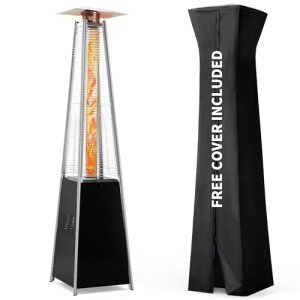Multi Fuel Stoves for Sale: A Comprehensive Guide
Multi fuel stoves have acquired increasing popularity throughout the years due to their adaptability, efficiency, and aesthetic appeal. These stoves can burn different types of fuel, such as wood, coal, and biomass, enabling homeowners to pick the most cost-efficient and environmentally-friendly choice based on their requirements. Minimalist Fireplaces intends to provide a thorough introduction of multi fuel stoves, their benefits, factors to consider for purchasing, various types offered, and responses to often asked questions.
The Benefits of Multi Fuel Stoves
Multi fuel stoves use a variety of advantages for homeowners aiming to optimize their heating solutions. Some of the key advantages consist of:
- Versatility: The ability to utilize various fuels permits house owners to adapt to altering circumstances, such as varying fuel costs or availability.
- Cost-effectiveness: Depending on regional fuel costs, users may find savings by burning more affordable fuels like wood or coal.
- Ecological Impact: Many multi fuel stoves produce lower emissions than traditional heater, particularly when using sustainably sourced biomass.
- Aesthetic Appeal: Multi fuel stoves add a touch of heat and beauty to any home, creating a comfortable environment.
- Efficiency: Modern multi fuel stoves are developed to take full advantage of combustion and heat output, providing an efficient heating option for homes.
Types of Multi Fuel Stoves
When thinking about a multi fuel range, it's crucial to comprehend the different types offered on the marketplace. Below are some common categories:
| Type | Description | Normal Fuel Sources |
|---|---|---|
| Wood Burning Stoves | Specifically designed for burning wood logs and pellets. | Logs, wood pellets |
| Coal Stoves | Stoves optimized for burning coal, offering high heat output. | Anthracite, bituminous coal |
| Pellet Stoves | Usage compressed pellets made from wood or biomass, efficient burning. | Wood pellets, biomass pellets |
| Combination Stoves | Capable of burning both wood and coal, offering versatility. | Wood, coal |
| Biofuel Stoves | Developed to burn liquid biofuels, promoting sustainability. | Bioethanol, biodiesel |
Factors to consider for Purchasing a Multi Fuel Stove
Before purchasing a multi fuel stove, there are several elements to take into consideration to guarantee the selected design fulfills heating requirements and preferences. Here are some critical factors to consider:
- Size and Capacity: Evaluate the heating requirements for the area and choose a stove with the proper output. This is usually measured in kilowatts (kW).
- Efficiency Ratings: Look for stoves with high efficiency rankings, which represents much better fuel utilization and minimized emissions.
- Material and Build Quality: Opt for stoves made from durable products such as cast iron or high-grade steel that can hold up against heats.
- Price: The budget plan plays a substantial function in decision-making. Consider both the upfront expense and ongoing fuel expenses.
- Installation: Some models might need expert setup or particular flue systems. Check regional regulations and codes for compliance.
- Visual appeals: Consider the design and surface to ensure it complements your home décor.
Frequently Asked Questions About Multi Fuel Stoves
1. Can I utilize any kind of fuel in a multi fuel range?
Multi fuel stoves are developed to use specific types of fuels. Constantly describe the producer's guidelines to know which fuels are compatible.
2. How do I keep my multi fuel stove?
Routine maintenance includes cleaning up the flue pipe, inspecting for clogs, and examining seals and gaskets. Following the manufacturer's maintenance schedule is vital for security and efficiency.
3. Are multi fuel stoves safe to use?
Yes, when properly set up and maintained, multi fuel stoves can be a safe heating alternative. It is important to follow security regulations and guidelines for setup.
4. Do I require a chimney for a multi fuel range?
Yes, most multi fuel stoves require a chimney or flue system to vent smoke and gases outside the home. Ensure that the system is set up according to local building regulations.
5. What is the typical life-span of a multi fuel range?
With proper upkeep, a durable multi fuel stove can last anywhere from 15 to 25 years, depending on use and care.
Multi fuel stoves offer a flexible and efficient heating service for house owners, enabling them to pick their preferred fuel type based on cost and schedule. By considering the numerous types of stoves, their benefits, and elements to consider when buying, individuals can make informed decisions that will improve their home's convenience. With a large array of alternatives available, prospective purchasers must do extensive research study, considering the range's efficiency, fuel compatibility, and total style to discover the very best suitable for their requirements.
In conclusion, while multi fuel stoves can look like a huge financial investment, their versatility and efficiency make them a beneficial addition to any home. Whether it's for supplemental heating or as the primary source of heat, a multi fuel stove supplies a practical service for the modern property owner wanting to balance convenience with sustainability.

